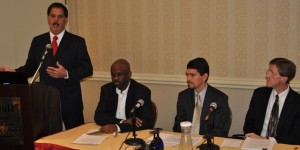
A panel discussion led by Dr. Michael Christopher Gibbons, associate director of the Johns Hopkins Urban Health Institute, also a faculty member at the Johns Hopkins’ Schools of Medicine and Public Health, discussed Health Information Technology / Health Information Exchange (HIE) extensively at the 24th annual Black Engineer of the Year STEM Global Competitiveness Conference held at the Baltimore Convention Center between Feb. 18 – 20.
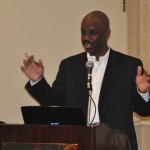
The panel of experts, which included David Sharp, director, Center for Health Information Technology at the Maryland Health Care Commission; David Horrocks, president and CEO of CRISP Health (Chesapeake Regional Information System for our Patients); and Wayne Owens of Health Care IT Solutions, stressed on the need for the health care industry to capitalize much on the emerging technologies that are revolutionizing our world, and which will enable medical practices to run more effectively and efficiently in the United States.
Describing HIE in brief, Dr. Gibbons said it involves the exchange of health information about patients, such as exchanging information about patients between patients, their providers and between hospitals. He said HIE can also be utilized at the population level to gather meaningful information about people and certain types of diseases.
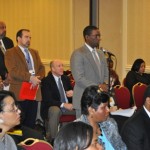
“Dealing with data at that level can certainly have implications for understanding disparities and inequalities and potentially for solving them,” Gibbons said.
Dr. Gibbons spoke about some of the problems faced in the senior population level such as social isolation, which he said could lead to factors as disorientation, depression, and cardiovascular disease.
“What if all of our seniors were now not only connected to their doctors, or their health systems, but connected to each other,” Gibbons said talking about the potentials on how effectively technology can play a role in dealing with health issues.
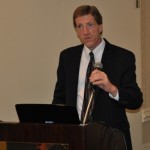
David Sharp, director at the Maryland Health Care Commission said: “Health IT is really about improving health care quality, preventing medical errors and reducing health care costs.”
Mr. Sharp added that unlike many, many states that are currently in the planning stages of Health IT, Maryland is among the few that are actually in the implementation phase of this technology.
He spoke about the importance of electronic health record option, which will ease access to a patient’s medical record wherever they are in the country and may need urgent medical attention.
“Eventually that record should be available from you. If you are in Sunny, Florida, and you trip and break an ankle, that hospital or physician should be able to access that information and be able to look at your medical history, your allergies and anything else related to care that will help provide a better care,” Sharp said.
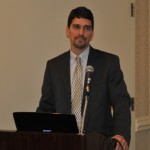
David Horrocks, gave an overview of his organization, CRISP Health, and said there is a great deal of economic activity around Health IT.
“Health Information Technology holds a tremendous promise for improving outcomes, efficiency, safety and access,” Horrocks said, adding that three essential components tied to this are Health Information Exchange, Electronic Health Records, and Personal Health Records.
Horrocks said Personal Health Records (PHR) will become increasingly important, especially with the amount of information that any one patient or consumer can have about themselves.
He said such information grows over time and becomes hard to manage, adding that PHR will be very instrumental in its effective management.
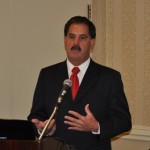
Wayne Owens said in his last admission as Global Director of Health Care, he learned a lot from traveling around the world that in many respects, the U.S. is behind many countries on many advances — something that needs to be addressed.
Mr. Owens said the Obama Administration is getting it right on the road forward and we are going to now be focused.
“It really has been about priorities and having the money there to do it. This is not inexpensive and why have other countries put the money there,” Owens said.
“When we talk about implementing a health information exchange in the State of Maryland, that exchange will be interoperable to other states, to the entire federal agencies, and to the world,” Owens said, adding that as we travel, our records will be available wherever we are.
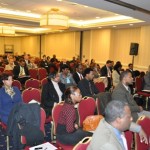
Owens gave a distinction of what hospitals looked like in the ‘50s and today, highlighting the advancement of technology and infrastructure.
On the other hand, when comparing Medical Records in the ‘50s to that of the modern day, it is clearly evident that a lot of work needs to be done to transform much of the paper-style records into electronic format.
“You cannot use 1950s style systems to practice 2010 style medicine,” Owens said.
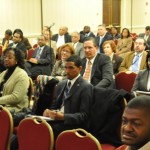
He said there has been multiple failures in health information exchange and highlighted as part of vision going forward the need for affordability.
“You can’t solve and come up with a system and make it so difficult…,” Owens said, adding that they need to have low start-up costs and be repeatable.
“A lot of these systems fail simply because they are not sustainable – not that there vision is not good. The economic business model has to be very focus,” Owens said.
Audio files of highly enlightening panel discussion coming your way soon…
Click on Album below to see conference photos
 |
| 24th BEYA STEM Global Competitiveness Conference |
Also see:
· About Ibrahim | About Ib’s Blog | Testimonials | Ib’s Blog Home
· Ibrahim Dabo to Speak at Harford Day School on International Day
· 24th BEYA Global Competitiveness Conference Opens Doors Of Opportunities In STEM Programs And Celebrates Excellence
· Visionary Marketing Group Recognizes Diversity And Empowers Business Professionals At Its 11th Minority Business Summit
· University of Maryland Medical System Has Strengthened Ties with Minorities, Says COO Herbert Buchanan
